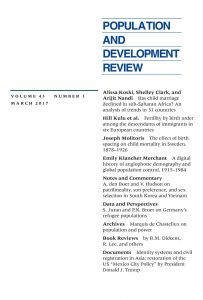Title IX v. The Boy Crisis: Toward Single-Sex Education?
A few weeks ago I posted some thoughts on the impact of Title IX beyond collegiate athletics and last week my colleague, Markus Gerke, wrote brilliantly about the myth of the boy crisis in education. In this post I will illustrate how Title IX proponents and believers in the boy crisis myth have come to clash over the topic of single-sex education.
The movement to single-sex education in the US has been framed as a solution to both girls’ absence from science, technology, engineering, and math disciplines and the perceived decline in boys’ overall academic success. However, the data behind these assertions is shaky at best. Diane Halpern, Professor of Psychology at Claremont McKenna College and former President of the American Psychological Association, wrote a particularly biting review of the pro single-sex education literature. Perhaps as a result of the pro single-sex education framing, the US has seen an increased interest in single-sex schooling in the last few decades. More private single-sex schools have emerged and even many public school districts have begun to experiment with single-sex programs or classrooms.
An important question that arises in consideration of public schooling, though, is if separate schooling is actually fair to all students. The racialized question of separate but equal in education was answered by Brown v. Board of Education in 1954. The Supreme Court ruled that separate but equal in regard to race is not actually equal at all. Should we expect gendered segregation of schooling to be any different? (I am certainly not the first to ask this question.)
Leonard Sax, a psychologist and physician, argues not only that gender segregated schools can be equal, but that they can be better than coeducational schooling. He argues that the language of “separate but equal” in relation to the single-sex education debate is out of place because while racial segregation of schooling was about limiting students’ access, single-sex education is about broadening students’ access and opportunities.
The American Civil Liberties Union (ACLU) disagrees. According to the ACLU, not only are sex-segregated educational programs ineffective, they are illegal. Title IX, which states that “No person in the United States shall, on the basis of sex, be excluded from participation in, be denied the benefits of, or be subjected to discrimination under any education program or activity receiving federal financial assistance…”, is where the ACLU and other opponents of sex-segregated schools point to bolster their claim of illegality. The ACLU has struggled against sex-segregated schooling for a very long time, but earlier this year they officially launched their “Teach Kids, Not Stereotypes” campaign. As a part of the campaign, they gathered data on single-sex education programs in 15 states and found that the majority of them were out of compliance with Title IX requirements. Many of them relied on outdated and scientifically unfounded stereotypes of boys and girls to drive their curriculum. As a result they were, in fact, decidedly unequal.
The ACLU’s findings have led them to challenge the sex-segregated programs in several states and even file a lawsuit against a West Virginia program. The single-sex education question is, at least in part, a legal one, but it is also a scientific one. At the moment we simply don’t have sufficient evidence to say that single-sex education in the US actually works. Perhaps if we do a better job of having the scientific conversation about whether or not single-sex education actually works we wouldn’t have to have the conversation about the legality. But, in the absence of high-quality research, why err on the side of segregation?
Suggested Reading
ACLU. 2012. “Preliminary Findings of ACLU ‘Teach Kids, Not Stereotypes’ Campaign.” ACLU, New York.







